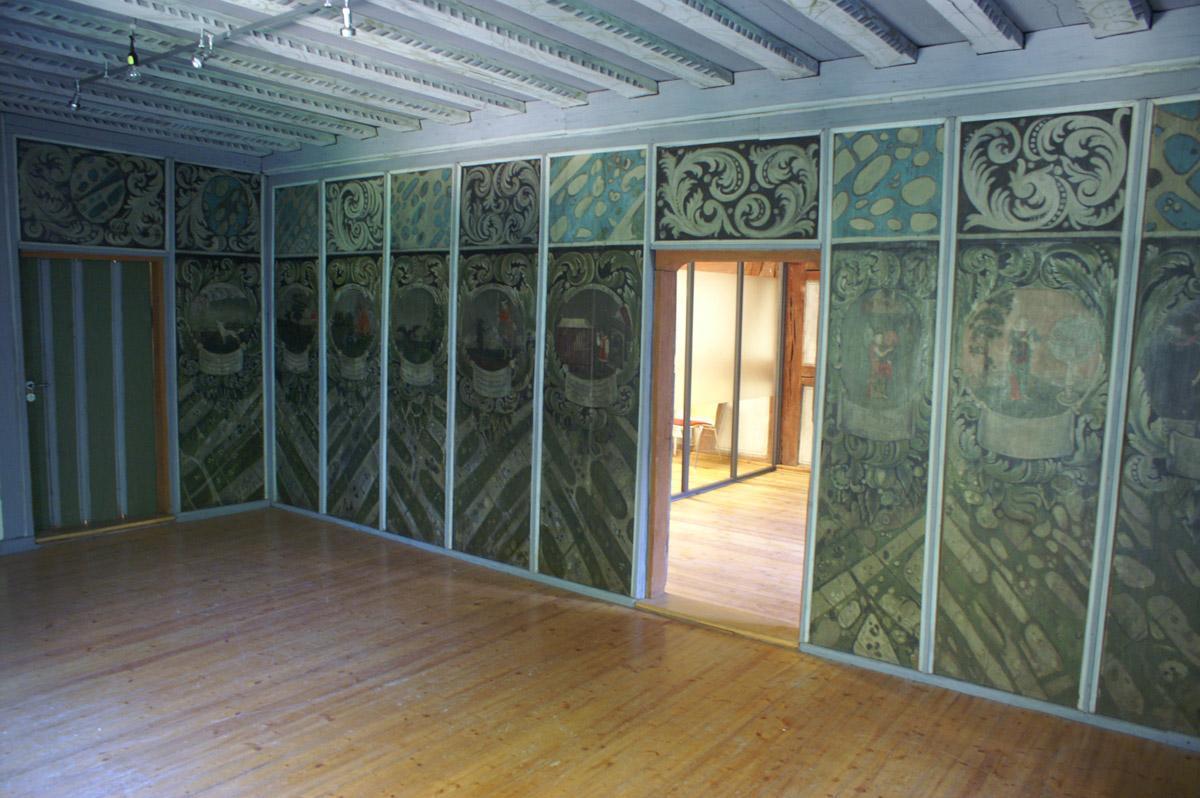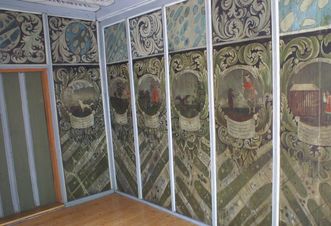A wealth of Baroque
The corner room in the upper story of the prelature, at the west end of the dormitory, is paneled. The two preserved walls and the beam ceiling are painted in shades of blue, gray, and green. The wooden wall paneling is decorated with portrait medallions, lavish Baroque ornaments, and a kind of imitation marble. Each portrait medallion has a clever Latin axiom.





